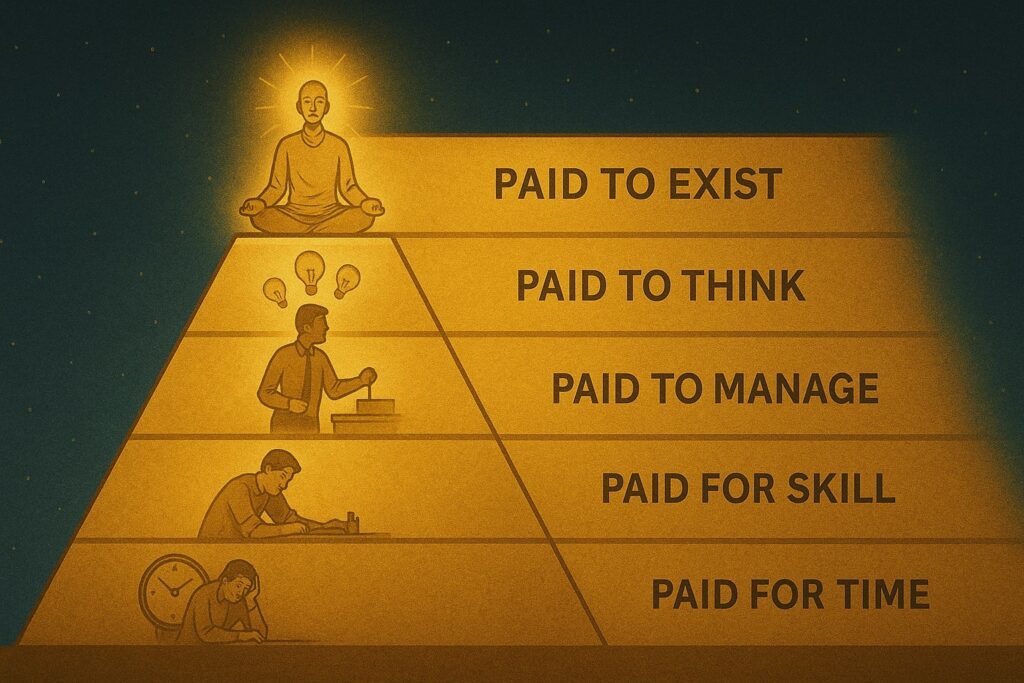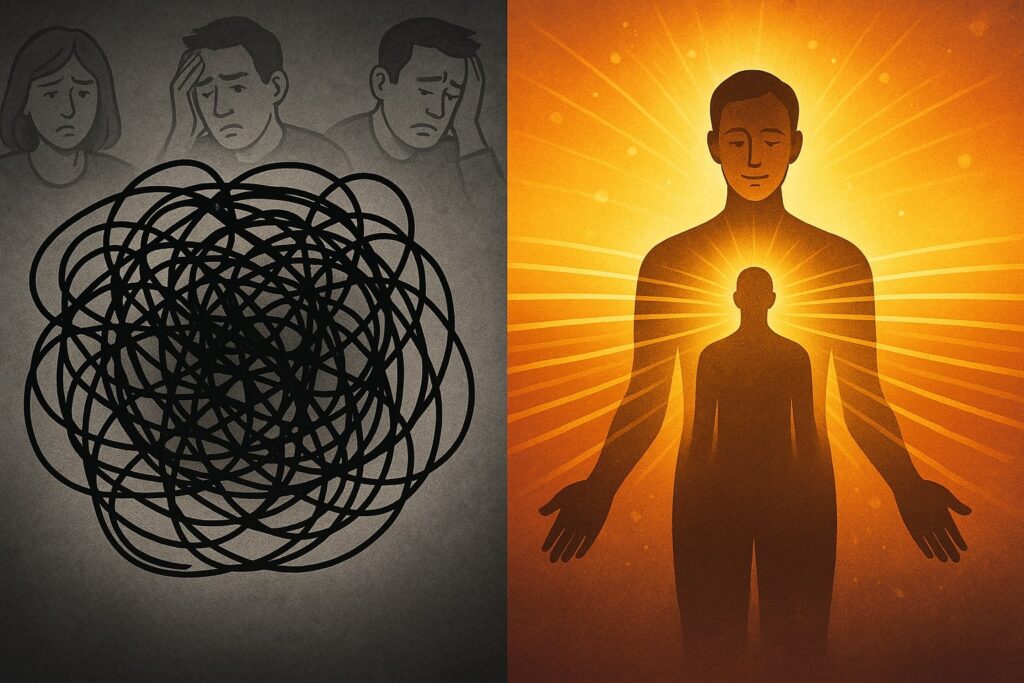“Effort is inherently unsustainable. Play is the only sustainable strategy. Authenticity is the only thing that is truly sustainable.” — Ani Manian
What If Success Didn’t Require Suffering?

Imagine waking up without an alarm, building a business that nourishes you instead of draining you, and finding joy not at the end of a long road of hustle, but in each moment along the way. This isn’t some escapist fantasy. It’s a grounded, deeply transformative way of living and working that Ani Manian calls Success with EASE.
In a world where “grind culture” is glorified, this paradigm challenges everything you’ve been taught about achievement. Success, according to Ani, shouldn’t feel like an uphill battle. It should feel like being pulled by joy.
And yet, most people have been conditioned to associate struggle with worth. We hustle for significance. We burn out for validation. What if that wasn’t required anymore?
The Core Philosophy: Ease and Authenticity
Ani believes that authenticity is the foundation of sustainable success. Why? Because being yourself doesn’t cost you energy. It gives you energy.
“Anything we do because we think we have to engineer a certain outcome is hard to sustain.”
The most powerful business strategy isn’t better marketing or a more sophisticated funnel. It’s creating an economic engine around your energy — one that converts your essence into wealth, joy, and purpose. This is the ultimate leverage point: when you get paid to exist.
Expert Backing: The Case for Authenticity
Psychologists and leadership experts agree. Indra Nooyi, former CEO of PepsiCo, said: “Bring your whole self to work.” Not because it sounds nice, but because it’s what works. Authentic leaders are more trusted, more fulfilled, and more effective.
Michael Simmons calls this “compound learning” — the ability to grow exponentially by aligning with your true interests and strengths over time. When you follow your inner compass, you’re not just more consistent; you’re unstoppable.
The Five Levels of Value: From Effort to Essence

Ani outlines a hierarchy that flips the traditional idea of success on its head:
- Paid for Time — Exchanging hours for dollars.
- Paid for Skill — Monetizing a learned craft.
- Paid to Manage — Organizing others’ output.
- Paid to Think — Using insight to generate exponential value.
- Paid to Exist — The ultimate level, where your presence alone holds value.
“When we can figure out how to just get paid to be ourselves, then joy can be at the center of our existence.”
This isn’t about ego. It’s about energy architecture. You build a system that turns your authenticity into outcomes. It’s not lazy; it’s leveraged.
Why Most People Sabotage Their Own Success
Here’s the paradox: the closer most people get to real ease and joy, the more they self-sabotage. Why? Because it feels unfamiliar. The nervous system doesn’t register joy as safe — it registers familiarity as safe. If suffering is all you’ve known, ease feels like danger.
“I grew up in so much chaos that peace felt unsafe. The first time I tried to kill myself, I was six years old. My system equated stillness with death.”
Ani’s personal story reminds us: this isn’t just mindset. It’s biological wiring. Rewiring requires more than affirmations — it requires embodiment.
Understanding Entropy: The Hidden Cost of Inauthenticity

Entropy is a measure of disorder. In relationships, in business, and within your own psyche, high entropy shows up as friction, misalignment, and burnout.
“Every system tends toward disorder unless we actively reduce entropy.”
The good news? Entropy can be reduced. Through alignment. Through presence. Through choosing ease over effort. It’s not about avoiding challenge. It’s about choosing the right kind of challenge.
Breaking Free from the Upper Limit Problem
Gay Hendricks calls it the “Upper Limit Problem”: the tendency to sabotage ourselves when we start to feel too good. Ani echoes this with a powerful metaphor:
“It’s like there’s a rubber band attached to where we feel comfortable. The further we stretch into joy, the more it tries to snap us back.”
That snapback is where self-sabotage lives. It’s why you ghost that promising client. It’s why you pick a fight when things feel too peaceful. It’s the subconscious trying to return to your baseline.
The solution? Shift your baseline.
Ani breaks this down into three layers:
- Nervous System (Tier 1) — Can your body tolerate ease?
- Ego Structure (Tier 2) — Can your mind rewrite old stories?
- Spiritual Belief (Tier 3) — Do you feel safe in the universe?
Healing at all three levels is required to truly stabilize at ease.
The Power of a Longer Time Horizon
One of the most liberating shifts Ani teaches is to extend your time horizon. When you stop trying to win the day and start designing the decade, your nervous system relaxes. Pressure drops. Clarity increases.
“The longer our time horizon, the easier our experience in the present.”
Just look at Warren Buffett. He only makes a few high-leverage decisions per year — and those decisions are worth billions. It’s not because he’s faster. It’s because he’s aligned.
Actionable Practices for Living with Ease
Ready to start living this philosophy? Here are five powerful practices:
1. Audit Your Entropy
- Identify where disorder shows up (relationships, work, emotions).
- Ask: What part of this is out of alignment with my true self?
- Reduce noise. Simplify decisions. Streamline systems.
2. Practice Nervous System Literacy
- Notice: What does ease feel like in your body?
- Rehearse peace. Make it familiar.
- Use breathwork, meditation, or stillness to train your baseline.
3. Redesign for Joy
- Review your day: What activities light you up vs. drain you?
- Refactor your schedule around joy, not obligation.
- Build your business or career to reflect your natural rhythms.
4. Shift Your Self-Talk
- Replace internal criticism with curiosity.
- Use affirmations that align with authenticity, not performance.
- Track when you’re trying to “earn” love or worth through output.
5. Join a Growth-Oriented Community
- Find people who model success with ease.
- Practice being seen without performing.
- Share real challenges, not just wins.
Self-Assessment: On a scale of 1–10, how much of your success today comes with ease? How much comes from force?
Addressing Common Resistance
“But I have bills to pay.”
Yes, reality matters. Ease doesn’t mean laziness. It means choosing the most energetically aligned path within reality. Even incremental shifts add up.
“Won’t I lose my edge?”
Only if your edge was based on adrenaline. Replace hustle with strategy. Replace willpower with alignment.
“This sounds soft.”
Soft doesn’t mean weak. Ani’s clients include high-performing CEOs. This work is rigorous — just not in the way you’re used to.
Ease as the New Edge
In a noisy world addicted to effort, ease is a competitive advantage. It’s clarity in a fog. It’s energy that doesn’t burn out. It’s charisma that doesn’t need to prove itself.
“The final level of this whole game is being paid to exist.”
If you’re Matt — the deeply intelligent, emotionally under-nurtured man described in our avatar — this shift isn’t just strategic. It’s soul-saving. Ease doesn’t mean you’re giving up. It means you’re finally coming home to yourself.
Success Metrics That Matter
- Days started without an alarm
- Moments of genuine joy during work
- Number of decisions made from alignment, not fear
- Level of peace in your nervous system by end of day
Final Thought: What If You Optimized for Joy?
Try this for a week: With every decision, ask, “What would maximize joy here?” Not comfort. Not distraction. Joy.
Let this be the moment you stop striving to become someone else — and start building from the truth of who you already are.
Ready to go deeper? Watch the full video with Ani Manian here and leave a comment with your biggest takeaway.
Subscribe to the YouTube channel and brianbegin.com to stay connected to a new paradigm of power, purpose, and ease.
“To me, success is just feeling good about being here, in this moment.” — Ani Manian

